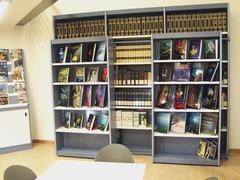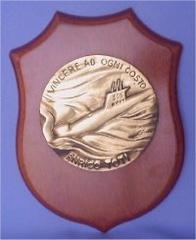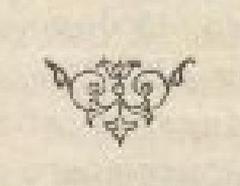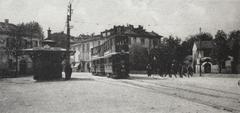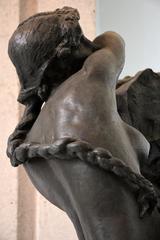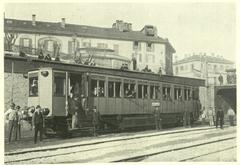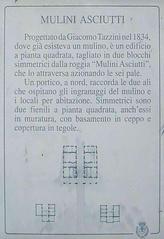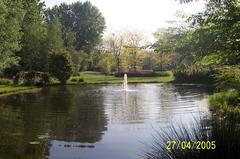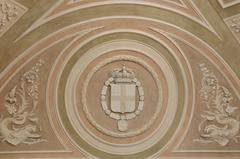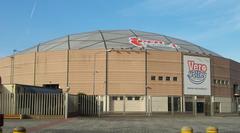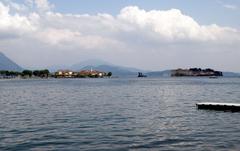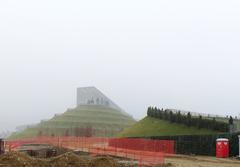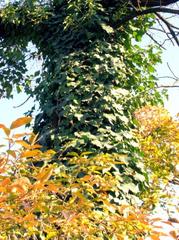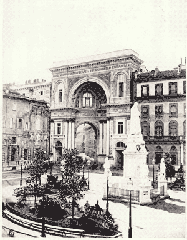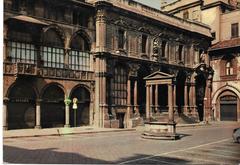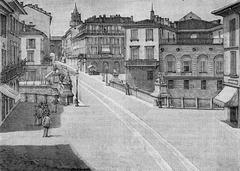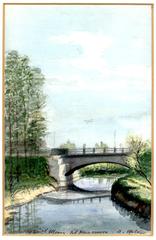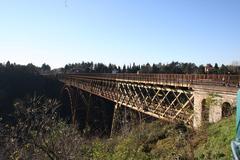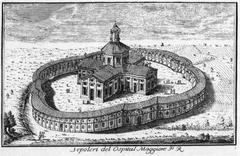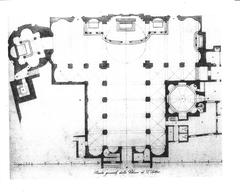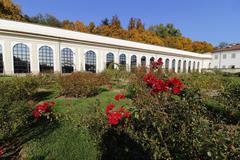Cusano–Cinisello–Monza Tramway: Visiting Hours, Tickets, and Travel Guide
Date: 04/07/2025
Introduction: Legacy of a Pioneering Tramway
Nestled in the heart of Lombardy, the Cusano–Cinisello–Monza Tramway stands as a testament to the transformative role of early public transit in shaping the region’s industrial and urban character. Operational from 1890 to 1918, this interurban tram line linked Cusano Milanino, Cinisello Balsamo, and Monza, facilitating the movement of workers and goods during a pivotal era of growth in northern Milan’s metropolitan area. Initially steam-powered and later electrified, the tramway drove technological progress and fostered regional integration, contributing significantly to Monza’s socio-economic expansion, particularly in the textile and machinery sectors (treniebinari.it; italythisway.com).
Though service ended over a century ago, the tramway’s legacy persists. Surviving architectural features, interpretive walking and cycling routes, and local museum exhibits all provide tangible connections to this chapter of Lombardy’s transport history. Today, visitors can explore Monza’s transport past while also engaging with contemporary projects like the Metrotramvia Milano–Brianza and the Metro Line 5 (M5) extension, which continue the tradition of innovative public transit in the region (Milano Città Stato; Monza Tourism).
This detailed guide presents everything you need to experience the Cusano–Cinisello–Monza Tramway’s enduring impact: practical visitor information, historical background, accessibility tips, nearby attractions, and resources for further exploration.
Contents
- Introduction
- History and Development
- Route and Technical Features
- Socio-Economic and Urban Impact
- Closure and Legacy
- Experiencing the Tramway Today
- Modern Transit Developments
- Visiting Hours, Tickets, and Accessibility
- Top Attractions and Travel Tips
- Frequently Asked Questions (FAQ)
- Conclusion
- Sources
History and Development
Early Years and Inception
The Cusano–Cinisello–Monza Tramway was inaugurated in 1890, during a period of rapid industrial expansion in Lombardy. Managed by a local company, the line was initially operated with steam traction and later converted to electric power (600 V DC), reflecting the era’s technological advancements (treniebinari.it). The tramway connected residential and industrial centers, providing vital commuter and freight services.
Route and Technical Features
Spanning approximately 10–15 km, the tramway route strategically linked Cusano Milanino, Cinisello Balsamo, and Monza, integrating with other Milanese tram services through frequent departures and dedicated infrastructure, including passing loops and multiple connections (treniebinari.it). The line’s track gauge was 1,445 mm, and rolling stock evolved from steam locomotives to comfortable, durable electric tramcars.
Socio-Economic and Urban Impact
The tramway played a crucial role in Monza’s industrialization, supporting the growth of textiles and machinery industries and helping transform villages into thriving suburban communities (italythisway.com). It fostered regional connectivity, social mobility, and economic exchange, and even served public welfare needs during World War I with a special spur for transporting wounded soldiers (Wikipedia: Tranvia Monza-Carate).
Closure and Legacy
Changing mobility patterns and post-war urban planning led to the tramway’s closure in 1918 as buses and private vehicles became the dominant mode of transport (wikipedia). Much of the infrastructure was dismantled or repurposed, but the tramway remains a powerful symbol of Monza’s development.
Experiencing the Tramway Today
Surviving Structures
- Former Tramway Station: The most notable remnant is the historic station at Via Andrea Appiani and Via Alessandro Volta, built in 1890 and now privately owned. While interior access is not available, the building’s distinctive architecture can be appreciated from the street (Lombardia Beni Culturali).
- Other Remnants: Traces of old tram poles, depot buildings, and route alignments can be observed throughout the area.
Walking and Cycling Routes
The original tramway route, around 9 km, can be traced along today’s streets and corridors. Walking or cycling these paths provides a direct link to Monza’s past. Although interpretive signage is limited, using historical maps or digital overlays enhances the experience (Wikipedia).
Museums and Heritage Exhibits
Local museums, such as the Museo e Tesoro del Duomo di Monza, occasionally feature exhibits on the tramway and regional transport history (Museo e Tesoro del Duomo di Monza). The Monza Civic Museums and city archives also provide valuable resources (Monza Civic Museums).
Guided Tours and Community Events
Seasonal guided walks, often organized in spring and autumn by heritage associations, highlight the tramway’s route and surviving landmarks. Annual festivals and educational programs celebrate Monza’s transport legacy and encourage community participation.
Modern Transit Developments
Metrotramvia Milano–Brianza
A contemporary successor to the historical tramway, the Metrotramvia Milano–Brianza is a 14.3-kilometer tram line under construction, with 25 stops serving eight municipalities, including Monza. With a projected fleet of 18 modern trams, the project represents over €260 million in sustainable mobility investment (Milano Città Stato).
Metro Line 5 (M5) Extension
The “lilac line” (M5) extension will directly connect Milan to Monza, improving access to key sites such as the Royal Villa and Parco di Monza. The extension includes 11 new stops and will decrease travel time between Milan and Monza to under 40 minutes.
Visiting Hours, Tickets, and Accessibility
Key Sites and Hours
- Former Tramway Station: Viewable from the street at Via Andrea Appiani and Via Alessandro Volta, Monza. No interior access; open for exterior viewing at any time.
- Museo e Tesoro del Duomo di Monza: Tuesday–Sunday, 9:00 AM–6:00 PM; tickets approximately €8 for adults, with discounts for seniors and students (Museo e Tesoro del Duomo di Monza).
- Guided Tramway Tours: Offered seasonally, typically priced €10–€15. Booking via Monza Tourism.
Accessibility
Most museum sites and walking routes are accessible to visitors with disabilities. The new metro and tram lines are designed for full accessibility, with elevators, ramps, and tactile paving.
Top Attractions and Travel Tips
- Royal Villa of Monza: Neoclassical palace with art exhibits and gardens (Royal Villa of Monza).
- Parco di Monza: Expansive park with free entry and cycling paths (Parco di Monza).
- Monza Cathedral (Duomo di Monza): Open daily, free entry; home to the Iron Crown of Lombardy.
- Historic City Center: Cafés, boutiques, and the Arengario.
- Autodromo Nazionale Monza: World-famous Formula 1 track (Autodromo Nazionale Monza).
Travel Tips
- Spring and autumn offer mild weather for outdoor exploring.
- Monza is accessible by train from Milan; local buses connect to heritage sites.
- Download the Milan transport app for metro and tram tickets.
- Arrive early at popular sites to avoid crowds.
Frequently Asked Questions (FAQ)
Q: Are there any surviving tramway structures I can visit?
A: Yes, the former station at Via Andrea Appiani and Via Alessandro Volta in Monza is a prominent remnant, viewable from the street (Lombardia Beni Culturali).
Q: Are guided tours available?
A: Seasonal tours are organized by local heritage groups; check Monza Tourism for dates and booking.
Q: Are heritage sites and new metro stations accessible?
A: Most sites are accessible. The new metro and tram lines are fully equipped for disabled visitors.
Q: Where can I find historical maps or resources for self-guided walks?
A: Local museums, city archives, and online resources like Wikipedia provide maps and information.
Q: Do I need a ticket to visit the former tramway station?
A: No, street viewing is free and open at any time.
Conclusion: Monza’s Past, Present, and Future in Transit
The Cusano–Cinisello–Monza Tramway is more than a historical footnote—it’s a vibrant element of Monza’s identity, shaping the city’s growth and community spirit. Today, its memory lives on through surviving architecture, walking routes, museum exhibits, and the city’s commitment to modern, sustainable transit. Whether you’re tracing the old tramway’s path, visiting local attractions, or planning to ride the new Metro Line 5, you’ll experience the rich blend of tradition and innovation that defines Monza.
To enhance your journey, download the Audiala app for updates on cultural events, transport developments, and travel tips. Start your exploration and connect with Monza’s unique story today!
Sources
- treniebinari.it
- italythisway.com
- Wikipedia: Trams in Milan
- Wikipedia: Tranvia Monza-Carate
- Lombardia Beni Culturali
- Monza Civic Museums
- Milano Città Stato
- Monza Tourism Official Site
- Museo e Tesoro del Duomo di Monza
- Understanding Italy: Monza
- Monza Historic Center
- Autodromo Nazionale Monza


